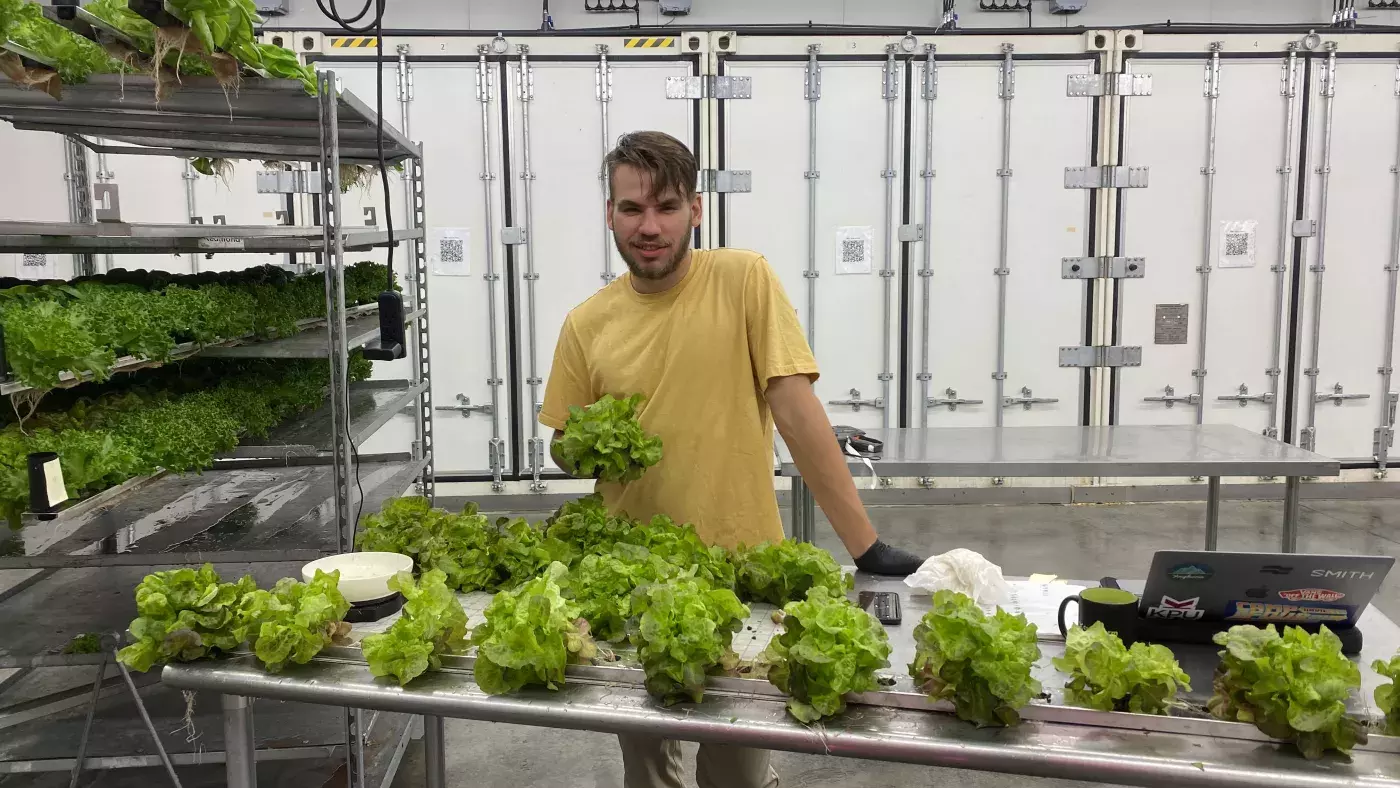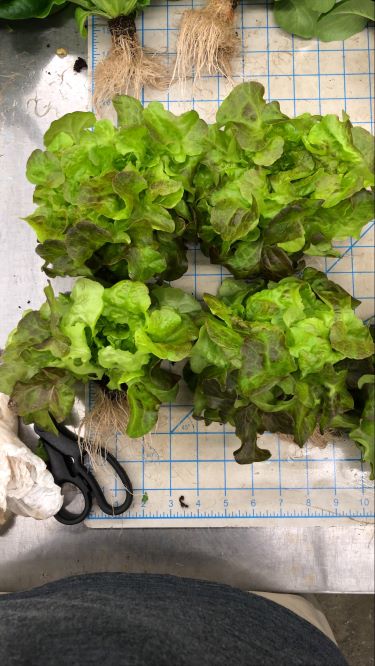

Sustainable Agriculture Student Research Project
Effect of pre-germination laser treatment on lettuce cultivated in a controlled environmentEthan Simonyi-Gindele, Department of Sustainable Agriculture and Food Systems, 2021 |
Introduction
Laser technology has the potential to impact agriculture and contribute to overall sustainability by reducing required inputs. Previous research indicates pre-germination laser treatment of seeds has a positive impact on overall growth and productivity of plants. Although these studies indicate the applicability of laser technology to agriculture, more research is required to test the effectiveness of laser treatment before it becomes commercially available on a large-scale. This study tested the effects of laser seed treatment on 4 lettuce varieties grown in a highly controlled, vertical farming system.
Objectives
- Primary objective:
- To test the effects of pre-germination laser treatment on growth rate and productivity of lettuce cultivated in the CubicFarms’ growth systems.
- Secondary objective:
- To test if the effects of laser treatment differ between lettuce varieties.

Methods
- Study took place CubicFarms, an indoor vertical farm.
- Laser treatment by Organic Path International
- Lettuce seeds from Enza Zaden
- Treatment factors
- Laser exposure: 0, 15, 30, 60, and 120 seconds
- Lettuce variety: Cristabel, Rosalyn, Fairly, and Elizium
- Completely Randomized Factorial Design
- 20 treatments with 2 replications
- Dependent Variables:
- Fresh foliage weight (g): 7, 14, and 18 days after transplant
- Head height (in): 14 and 18 days after transplant
- Head diameter (in): 14 and 18 days after transplant (discarded due to non-conformed data)
- Ten plants per plot were measured on each day

Results
- Analysis with repeated measures ANOVA found no significant laser treatment effect
- Flat lines on graphs indicate that there were no significant differences between laser treatment effects within and between varieties.

Figure 1. Fresh foliage weight (g) of four lettuce varieties (Elizium, Fairly, Rosalyn, and Cristabel) grown from seeds exposed to laser treatment for 0-120 seconds. Plants were weighed 7, 14, and 18 days after transplanting. Error bars denote 95% confidence interval around mean.

Figure 2. Head height (in) of four lettuce varieties (Elizium, Fairly, Rosalyn, Cristabel) grown from seed exposed to laser treatment for 0-120 seconds. Plant height was measured 14 and 18 days after transplanting. Error bars denote 95% confidence interval around mean.
Conclusion
In a previous field study in which the same laser seed treatment was used, laser treatment effect was found to be most significant in the lower nutrient environments (Ershov, 2020). The CubicFarms growth system is precisely designed so that all light, gas, and nutrient needs are optimized for the plants. Because conditions were optimal, there was slight room for laser treatment to have a significant effect.
Laser seed treatment did not have a significant effect on lettuce head height or fresh foliage weight in a controlled environment. Future research would benefit from examining the difference in laser seed treatment effect between high versus low nutrient environments. Additionally, studying the difference in effect between different crop types and varieties would ensure laser technology is used on crops where it will make a significant difference.
Aknowledgements
- Mike Bomford for guidance with experimental design and data analysis.
- Rebecca Harbut for guidance with reporting research results.
- Lindsay Dodds for help with experimental set-up and data collection.
- CubicFarms for providing space and resources to complete the experiment.
- Organic Path International for providing laser treatment.
- Enza Zaden for providing the lettuce seeds.
